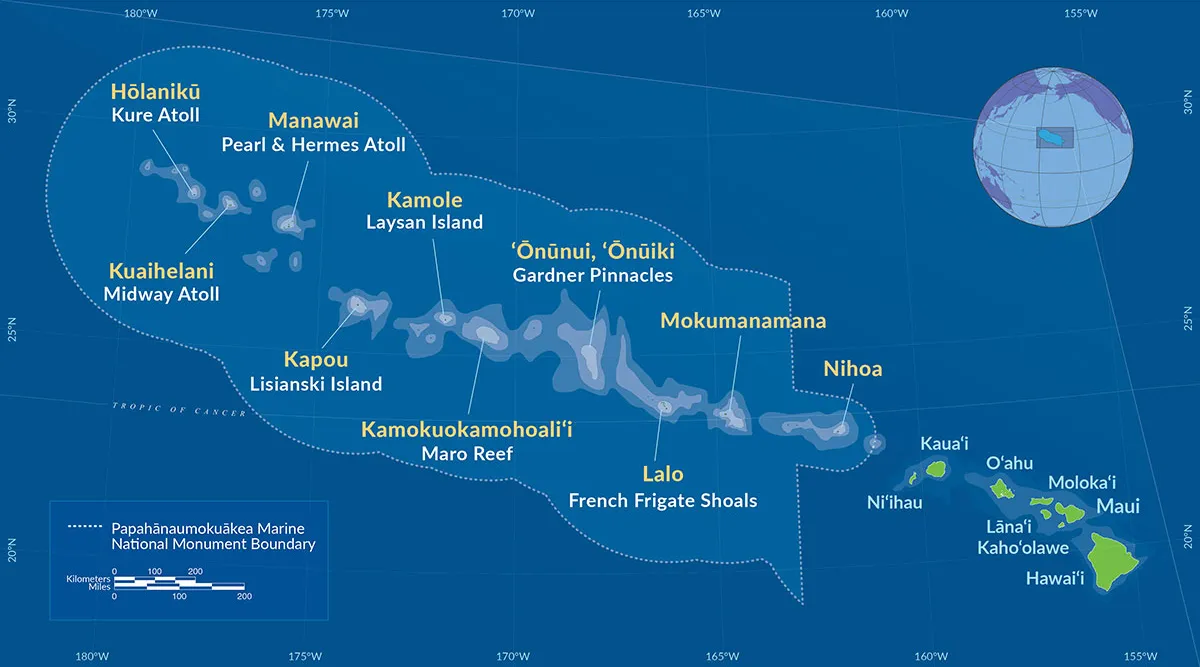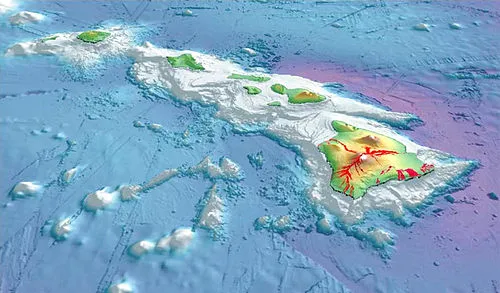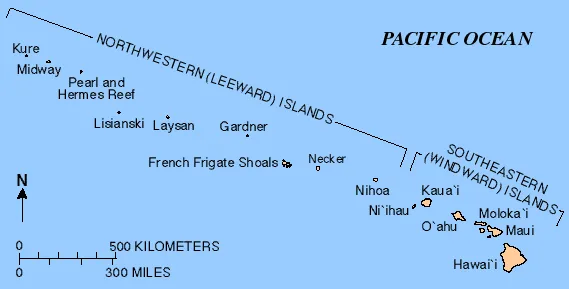Table of Contents
The Hawaiian Islands—also known as the Hawaii Islands—are a tropical wonder unlike anywhere else on Earth. With turquoise waters, lush rainforests, and fiery volcanoes, this chain of islands captures the true essence of paradise. But many visitors wonder: how many Hawaiian Islands are there?
The full Hawaiian archipelago includes 137 islands, islets, and atolls stretching over 1,500 miles across the Pacific Ocean. However, only eight major islands make up what most people think of as “Hawaii.” Each of these islands has its own personality, culture, and adventure—offering visitors a unique way to experience the Aloha Spirit.
And if you’re visiting Maui—the heart of the islands and home to NorthShore Zipline in Haiku—you’ll find yourself right in the center of it all.
The Eight Main Hawaiian Islands
The Hawaii Islands each tell their own story, shaped by volcanoes, culture, and history. Here’s what makes each one special:
- Hawaiʻi (The Big Island)
The largest of the Hawaiian Islands, the Big Island is a land of contrast—home to fiery volcanoes, snow-capped peaks, and lush rainforests. You can walk through Hawaiʻi Volcanoes National Park, relax on black sand beaches, and even visit Mauna Kea, one of the world’s best stargazing sites. It’s also where the islands continue to grow, as lava adds new land to the island every year. - Maui
Known as the Valley Isle, Maui is often considered the most balanced of the Hawaii Islands, offering both adventure and relaxation. Drive the legendary Road to Hāna, witness sunrise from Haleakalā National Park, or snorkel at Molokini Crater. And for families or thrill-seekers, Maui is also home to one of the island’s top-rated outdoor adventures—NorthShore Zipline in Haiku.
Nestled in a lush rainforest setting, NorthShore Zipline offers an unforgettable experience where you can zip through the historic haiku town and cool off afterward on Maui’s newest waterslide! It’s the perfect combination of excitement, natural beauty, and family fun. - Oʻahu
The Gathering Place blends city life with island charm. Oʻahu is home to Honolulu, Waikīkī Beach, and the historic Pearl Harbor. Visitors can explore cultural landmarks, world-class shopping, or ride the famous surf breaks on the North Shore. - Kauaʻi
Known as the Garden Isle, Kauaʻi is one of the most stunning Hawaii Islands, filled with waterfalls, canyons, and emerald cliffs. Explore Waimea Canyon, sail the Nā Pali Coast, or hike through rainforests that seem untouched by time. Kauaʻi is ideal for travelers seeking serenity and a connection to nature. - Molokaʻi
The Friendly Isle remains one of the most authentic of the Hawaiian Islands, where traditional Hawaiian culture thrives. Here you’ll find ancient fishponds, tall sea cliffs, and communities that still live with aloha at the center of everyday life. - Lānaʻi
The Pineapple Isle is known for its secluded luxury. Once covered in pineapple fields, Lānaʻi now features upscale resorts, off-road trails, and breathtaking views. Visit Keahiakawelo (Garden of the Gods) or unwind on Hulopoʻe Beach, where spinner dolphins often play offshore. - Niʻihau
The Forbidden Isle is privately owned and not open to general visitors, preserving traditional Hawaiian life. Rare helicopter tours from Kauaʻi offer a glimpse of this mysterious island’s untouched beauty. - Kahoʻolawe
The smallest of the main Hawaii Islands, Kahoʻolawe has no permanent residents. Once used for military bombing target practice, it’s now a site of cultural restoration and environmental healing—symbolizing the resilience of Hawaiian people and land.
The Northwestern Hawaiian Islands
Beyond the main eight lies the remote and ecologically vital chain known as the Northwestern Hawaiian Islands. These over 120 smaller islands and reefs are part of the Papahānaumokuākea Marine National Monument, one of the largest marine conservation areas on Earth.
This protected region includes Midway Atoll, Laysan Island, and French Frigate Shoals—home to endangered species like the Hawaiian monk seal and green sea turtle. Though few people ever visit these islands, their role in preserving Hawaii’s natural heritage is invaluable.

How the Hawaiian Islands Were Formed
The entire Hawaiian Islands chain was born from fire. Millions of years ago, a volcanic hotspot beneath the Pacific Plate pushed molten rock to the surface. As the plate slowly drifted northwest, new volcanoes rose from the ocean floor—forming the islands one by one.
The Big Island is still growing today, while older islands like Kauaʻi continue to erode and transform. Deep below the sea, a new volcano called Lōʻihi is forming—expected to eventually emerge as the next addition to the Hawaii Islands.

The Spirit of the Hawaii Islands
The Hawaiian Islands are more than just a tropical destination—they’re a living culture defined by aloha, respect, and connection. Each island offers a different experience, yet all share the same spirit of warmth and welcome.
Whether you’re seeking adventure, tranquility, or family fun, the Hawaii Islands offer something for everyone. And if your journey takes you to Maui, don’t miss out on one of its most unique adventures—NorthShore Zipline in Haiku. Fly through the jungle, laugh with your loved ones, and experience the Aloha Spirit in motion.
In Summary
There are 137 Hawaiian Islands, but only eight main Hawaii Islands form the heart of the Aloha State. From the volcanic power of the Big Island to the lush beauty of Kauaʻi and the adventure-filled landscapes of Maui, each island reveals a different side of paradise.
If you’re visiting Maui and looking for something unforgettable, make sure to add NorthShore Zipline to your Hawaii itinerary—where breathtaking views, thrilling ziplines, and a brand-new waterslide make it one of Maui’s most exciting family attractions.
Learn more about the Hawaii Islands:
- Go Hawaii – The Islands of Aloha
- Hawaiʻi Tourism Authority
- Papahānaumokuākea Marine National Monument
- Hawaiʻi Volcanoes National Park
Frequently Asked Questions
1. How many Hawaiian Islands are there in total?
There are 137 islands, islets, and atolls that make up the Hawaiian archipelago. However, only eight main Hawaiian Islands are commonly recognized—Hawaiʻi (Big Island), Maui, Oʻahu, Kauaʻi, Molokaʻi, Lānaʻi, Niʻihau, and Kahoʻolawe. The rest are smaller, uninhabited islands or coral reefs spread across 1,500 miles of the Pacific Ocean.
2. What are the eight main Hawaii Islands?
The eight main Hawaii Islands are:
- Hawaiʻi (Big Island)
- Maui
- Oʻahu
- Kauaʻi
- Molokaʻi
- Lānaʻi
- Niʻihau
- Kahoʻolawe
Each island has its own unique culture, landscape, and adventure opportunities—from the volcanic peaks of the Big Island to the lush jungles and ziplines of Maui.
3. Which Hawaiian Island is best to visit for families?
Maui is one of the best Hawaiian Islands for families because it offers a perfect balance of beaches, scenery, and family-friendly activities. Families love exploring the Road to Hāna, snorkeling at Molokini, or ziplining through the rainforest at NorthShore Zipline in Haiku. The adventure even includes a brand-new waterslide, making it the perfect “zip first, slide after” experience for all ages.
4. What is the difference between “Hawaii Islands” and “Hawaiian Islands”?
Both terms refer to the same group of islands. “Hawaii Islands” is a simplified version, while “Hawaiian Islands” is the more formal name used to describe the entire island chain that forms the U.S. state of Hawaii.
5. Which is the largest Hawaiian Island?
The Big Island of Hawaiʻi is the largest in the chain—nearly twice the size of all the other main islands combined. It’s famous for its active volcanoes, including Mauna Loa and Kīlauea, and its dramatically diverse landscapes that range from snowy mountaintops to black sand beaches.
6. Which Hawaiian Island has the best beaches?
Every island has incredible beaches, but Maui often ranks among the top for its variety and beauty. Kāʻanapali Beach, Wailea Beach, and Hāmoa Beach are favorites for swimming, snorkeling, and relaxing. For a unique experience, try Ziplining and Water Sliding at NorthShore Zipline, then unwind at a nearby beach in Haiku or Pāʻia.
7. Are all the Hawaiian Islands inhabited?
No. Only seven of the eight main Hawaiian Islands have permanent residents. Kahoʻolawe is uninhabited and used for cultural and environmental restoration. Other smaller islands in the chain are protected marine areas or bird sanctuaries.
8. How were the Hawaiian Islands formed?
The Hawaiian Islands were created by volcanic activity over a stationary hotspot in the Earth’s crust. As the Pacific Plate moved northwest, new islands formed one by one. The Big Island is still active today, while older islands like Kauaʻi have stopped erupting and are now beautifully eroded.
9. Which Hawaiian Island should I visit first?
If it’s your first trip to the Hawaii Islands, start with Maui or Oʻahu. Oʻahu offers the energy of Honolulu and cultural landmarks like Pearl Harbor, while Maui delivers stunning scenery, a relaxed vibe, and unforgettable outdoor experiences—like NorthShore Zipline’s treetop adventure in Haiku.
10. What’s the best adventure activity in Maui?
One of the top-rated adventure activities on Maui is ziplining at NorthShore Zipline. Located in Haiku’s lush rainforest, it’s perfect for families, couples, and thrill-seekers. Guests can soar through the treetops, take in panoramic ocean views, and finish their day on Maui’s newest waterslide attraction—a refreshing way to end a day of excitement.
11. Can you visit all the Hawaiian Islands on one trip?
You can visit several islands on one trip by booking inter-island flights, but it’s best to focus on one or two to truly experience their unique charms. Many visitors combine Maui and Oʻahu for a mix of adventure and culture—or stay longer on Maui to explore activities like NorthShore Zipline, snorkeling, and whale watching.
12. What makes the Hawaiian Islands so special?
The Hawaiian Islands are more than beautiful beaches—they’re alive with culture, history, and aloha. From ancient legends and hula traditions to modern eco-adventures, each island tells a story. The people, landscapes, and experiences—like the zipline and waterslide adventures at NorthShore Zipline—capture the spirit of Hawaii like nowhere else.
13. Where can I book a zipline adventure in Maui?
You can book directly with NorthShore Zipline in Haiku, Maui for an unforgettable rainforest adventure. They offer family-friendly zipline tours, a brand-new waterslide, and scenic views of Maui’s North Shore countryside.
Book your adventure now at NorthShore Zipline!
14. Why should I visit Maui among all the Hawaii Islands?
Maui combines the best of all worlds: luxury resorts, scenic drives, volcanic peaks, and tropical forests. Whether you’re exploring Haleakalā, swimming under waterfalls, or ziplining at NorthShore Zipline, you’ll experience the spirit of aloha in its purest form. It’s no wonder Maui is often called the heart of the Hawaiian Islands.
15. How can I experience authentic Hawaiian culture?
To experience authentic Hawaiian culture, attend a traditional lūʻau, learn about Hawaiian history at local cultural centers, and support family-run businesses. On Maui, adventure with locals at NorthShore Zipline, where guides share stories about the land and the old WWII base that once stood on the property—blending history, nature, and fun.
If you would like to read and learn more about interesting things in Hawaii! Check out our blog page here on our website!
or
